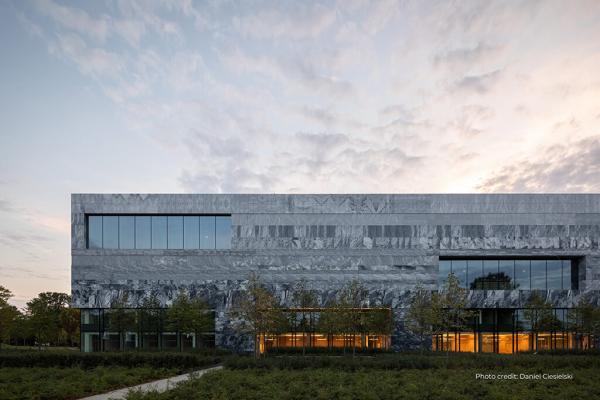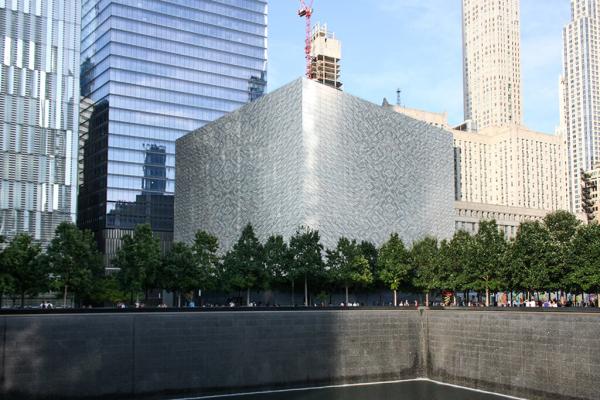On 17 October 2025, the gala ceremony for the StonebyPORTUGAL International Architecture and Design Awards was held, an initiative of ASSIMAGRA, the Portuguese Association of the Mineral Resources Industry, created to celebrate and promote, on a global scale, the excellence of Portuguese natural stone in architecture, public spaces, technological innovation and product design.The awards recognise creative visions capable of transforming matter into art, tradition into future and revealing Portugal's cultural and material identity to the world through stone.This initiative is part of the ‘Sustainable Stone of Portugal’ Green Agenda.
In this second edition, the winners in each category were:
ARCHITECTURE
1.- Polish History Museum (Warsaw, Poland) – Dimpomar

The Polish History Museum, located in Poland and executed by the Portuguese company Dimpomar, represents one of the most ambitious and technically complex projects among the nominees. Designed by the WXCA architecture studio and located in the Warsaw Citadel, this building is a true work of architectural art in which Portuguese natural stone plays a leading role.
STONE(S) USED: Portuguese Marble - Ruivina
AUTHOR: Krzysztof Budzisz
ARCHITECTURAL FIRM / DESIGN FIRM: WXCA
MINING COMPANY / PROCESSING COMPANY: Comarmore / Dimpomar, Rochas Portuguesas, Lda
2.- Montebelo Mosteiro de Alcobaça Hotel (Portugal) – Solancis

The historic restoration project of the Hotel Montebelo Mosteiro de Alcobaça, carried out by Solancis, represents an exemplary approach to the use of natural stone in heritage contexts of great historical and cultural value. This project, which restores the Rachadouro cloister, one of the wings of the monument classified as a UNESCO World Heritage Site, was conceived by architect Souto de Moura in collaboration with architect Luís Peixoto. The intervention posed an enormous challenge in terms of engineering and space adaptation. In order for each stone to fit perfectly into these centuries-old walls, a three-dimensional survey was carried out throughout the entire project to adjust the technical plans for each stone.
STONE(S) USED: Branco Real and Beige Topázio
AUTHOR: Architect Souto de Moura + Architect Luís Peixoto
ARCHITECTURAL STUDIO / DESIGN STUDIO: Souto de Moura
MINING COMPANY / PROCESSING COMPANY: Solancis
PUBLIC SPACE
Museum of Tolerance, Jerusalem (Israel) – LSI Stone

The Museum of Tolerance in Jerusalem, executed by LSI Stone in Jerusalem, Israel, is a testament to the importance of learning from history and promoting a society based on understanding, empathy and respect for all people. Created by the Simon Wiesenthal Centre, this museum offers a unique and impactful experience to its visitors. The use of Moca Cream and Moleanos Portuguese stones on the exterior of the museum introduces an aura of refinement, leaving a deeply impactful visual impression. The interplay of the stone's textural complexities and tonal gradients lends a three-dimensional character to the façade, reinforcing its overall aesthetic appeal.
STONE(S) USED: Moca Cream, Moleanos
AUTHOR: Chyutin Architects, Michal Sedlacek
ARCHITECTURAL FIRM / DESIGN FIRM: Chyutin Architects, Michal Sedlacek
MINING COMPANY / PROCESSING COMPANY: LSI Stone
INNOVATION
Perelman Performing Arts Centre (USA) – LSI Stone & Granoguli

The Perelman Performing Arts Centre, executed by LSI Stone in New York, is technically complex and deeply symbolic. Located in the heart of Manhattan, in the World Trade Centre complex, the building was designed by the REX studio as part of the reconstruction plan for the area affected by the attacks of 11 September 2001.
The building stands out for its unique façade: a 12,000 m² cube that appears simple, timeless and enigmatic. Clad in Portuguese pink marble with green veins, supplied by Granoguli, the project showcases national natural stone, reaffirming its quality and ability to meet the aesthetic and symbolic demands of high international prestige.
STONE(S) USED: Luminati marble
AUTHOR: Rex
ARCHITECTURAL STUDIO / DESIGN STUDIO: Rex
MINING COMPANY / PROCESSING COMPANY: Granoguli / LSI Stone
PRODUCT DESIGN
Collection of stools (Places) – Studio Olivah / Gisella Tortoriello (Portugal)

The Stools collection, developed by Studio Olivah in Sintra and designed by Gisella Tortoriello, consists of five sculptural benches that are part of the ‘Places’ collection. The project is based on the reuse of small blocks left over from extraction in Portuguese quarries and surpluses from local factories, materials that are usually discarded because they do not meet the standards of uniformity and size required by the industry. Each piece has been designed to highlight the uniqueness and natural imperfection of the stone, transforming rejected materials into design objects with aesthetic and symbolic identity. Sculpted by artisans and companies such as Vetor3, Marmofelizardo and Mármores Ferrar, with raw materials from quarries such as Mármores Rosal and Mármores Galrão, the benches are given names such as Adraga, Azenha, Nazaré, Carmo and Roça. Each one evokes places and memories, composing a poetic narrative that reconciles tradition, materiality and contemporary design.
STONE(S) USED: Moca Creme and Lioz Encarnado limestone. And various marbles from the Estremoz region.
AUTHOR: Studio Olivah
ARCHITECTURE FIRM/DESIGN STUDIO/ATELIER: Studio Olivah
EXTRACTION/TRANSFORMATION COMPANY(IES): Mármores Rosal, Marmores Ferrar, Grupo Galrão / Vetor 3, Marmofelizardo, Mármores Ferrar
THE TROPHY

The trophy for this award is not just an object of distinction. It is a material testimony to something greater: Portuguese stone as identity, as living culture, as continuity between generations. Its very construction reflects this idea. The trophy brings together, in a single form, different stones worked in Portugal — granite, schist, limestone, marble and basalt — which embody the diversity of territories, landscapes and practices that have shaped, and continue to shape, the way the country builds, inhabits and presents itself to the world.
